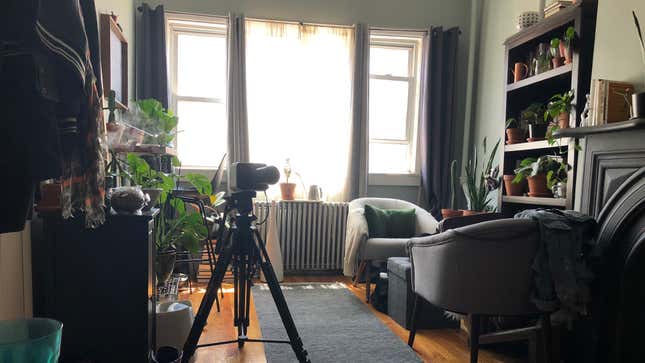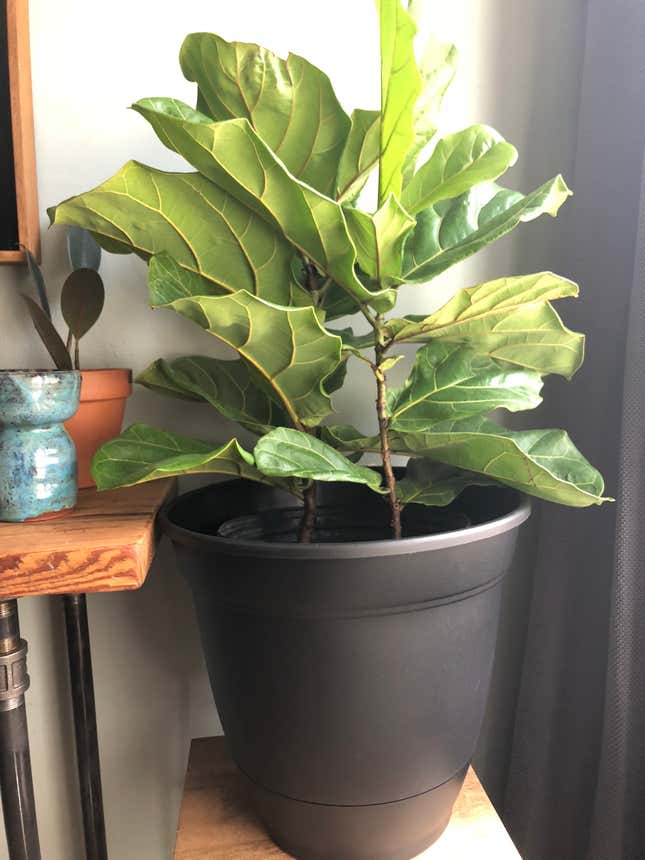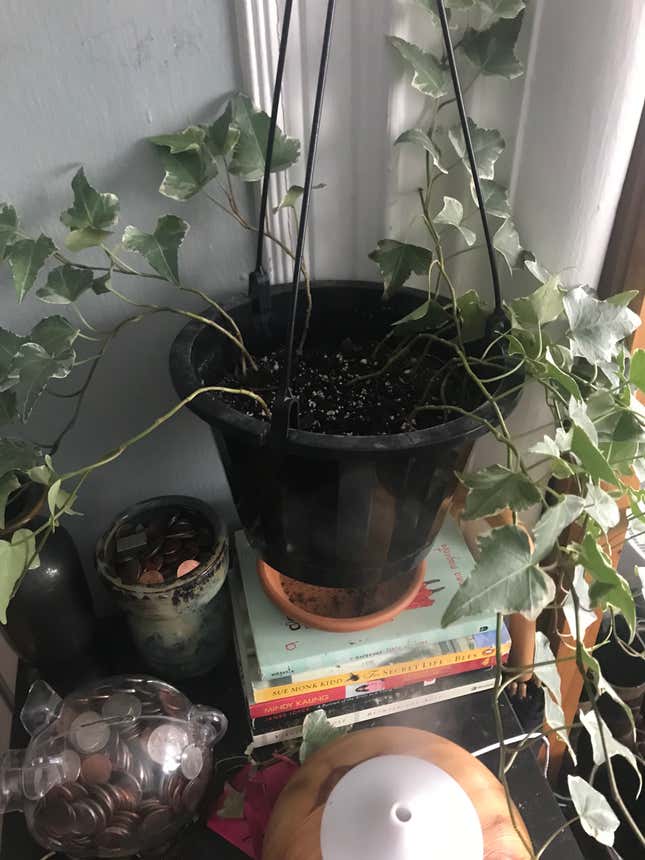A Plant Mom Grows in Brooklyn
Latest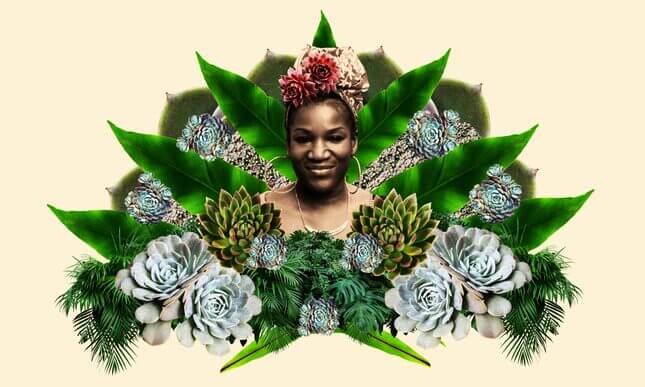

One dreary spring morning, I went on a Google search to find out how to measure foot candles. What is a foot candle? A foot candle is exactly what it sounds like (or maybe it isn’t): the intensity of light one candle produces from one foot away (this isn’t boring! It’s science!), which basically tells you how much light a given area of space receives. Why did I need to know how much scientific light my apartment was getting? Because I have friends that are plants—many of them—which need sunlight to grow.
To put things in perspective, I don’t have over 670 plants like this woman, who puts me to shame. I don’t even own 50! But I do have more than a few. In autumn of last year, I bought my first potted plants at a neighborhood flower shop—a gorgeous Pink Quill (a Bromeliad with a gorgeous flower) and a Dracaena, which has leaves that dangle like Sideshow Bob’s hair. The main reason I bought it was that I passed by the shop and thought, I should get a plant. I had no idea of these plants’ names or origins. I simply like decorating, and they seemed like the type of plants that would enhance the decor and peaceful vibe of my space without being intimidating.
Soon after, I picked up two more at one of those gentrified organic grocery stores with rows upon rows of La Croix in the display window. One was a fairly large Snake plant—a spiky beauty also known as a Mother-in-Law’s Tongue (which seems sexist). The other, a Silver Pothos (pictured below), I got because it was silvery and pretty.
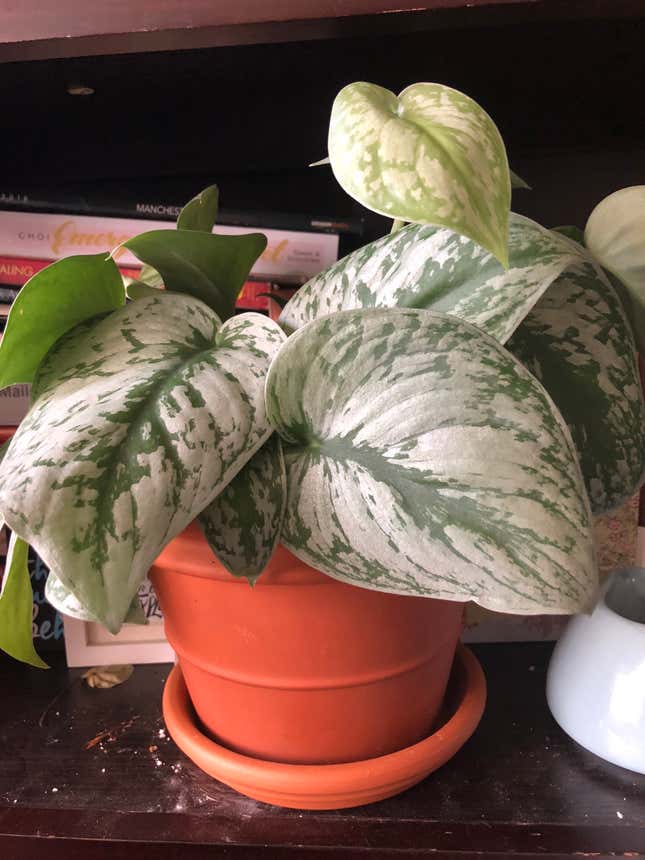
After doing some light research, I learned that I’d unknowingly made a sensible choice in buying a Snake plant, because as a species it’s known to be nearly un-killable—much like roaches or a man’s pride. Things began to spiral (or rather, life got better and full of plants) not long after. I have since gone from owning zero plants to mothering 22—a number that’s growing—in different varieties.
Next to the South-facing window (which is great for light, which means a lot of foot candles) in my living room, I placed a Fiddle Leaf Fig on a stool. (I later bought a proper plant stand for it.) Next to the Fig is a moderately sized Rubber plant. The Dracaena hugs the floor (on top of my Roomba). On the radiator, which is off right now, there’s an Alocasia (pictured below), its veiny leaves like the forehead of a Guido straining to pull a final deadlift. On the bookcase are a pair of Philodendron (a vining plant that’s easy to care for), one young (a cutting I received from my great coworker Megan Reynolds), one adolescent; and beside them, the Silver Pothos, a baby Peperomia, and also a young Philodendron Silver.
There’s more.
On a rack near the window, next to the Snake, I have a towering cactus and a Gasteraloe succulent that looks like Bowser’s head. A smaller Snake plant sits on the mantle. On a wooden work desk, there’s a Milk Tree, which looks like a cactus but technically isn’t; a baby Rubber plant; and a Rattlesnake plant, which is a pretty Calathea type that closes its leaves at night, as if in slumber or prayer. Next to that, on a floor rack: a Monstera. And on the countertop: a Bird’s Nest fern, a hanging Rhipsalis cactus, and a Pilea Friendship Plant I recently bought at Lowe’s. In the bedroom, on my dresser, there’s an African Spear (the Sanseveria cylindrica, in the Snake family), along with a String of Pearls hanging in the window. And on the kitchen window sill, a Pilea peperomioides (or Chinese Money Plant) with disc-shaped leaves. If these scientific names and nicknames sound foreign to you, then hello, you are me one year ago.
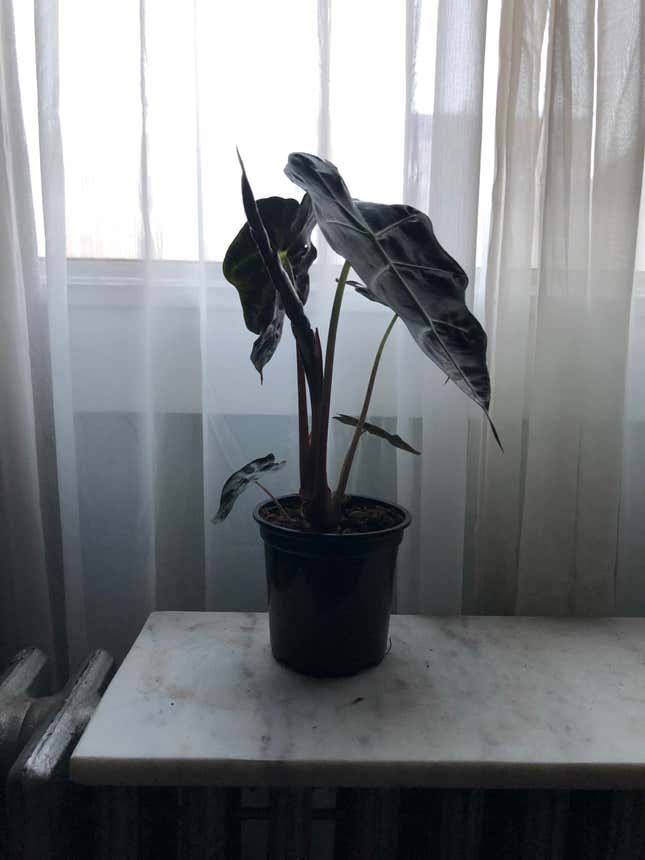
My main reason for waiting this long to become a delightful, scary plant lady before, other than my lack of confidence in keeping them alive, had to do with roaches. While living in Astoria in my 20s, I struggled with a roach infestation in my studio apartment. I got a plant as soon as I moved in, and the first time I went to water that plant, I saw a roach lurking behind the leaf. I looked up online that roaches were attracted to plants or water or whatever and immediately threw it out and swore off plants from thereon, which was shortsighted of me.
As part of my initial round of plant purchases, I also bought a purply Echeveria succulent, which I later killed via accidental slaughter. It was around this time that I started researching and learning more about what a plant actually is: A living thing. My friend also told me about the Instagram account @thesill (operated by The Sill, which sells plants both online and in their physical NYC shops), so I followed them, the first of many plant Instagrams I began to track as my interest ballooned into an obsession.
-

-

-

-

-

-

-

-

-

-

-

-

-

-

-

-

-

-

-

-

-

-

-

-

-

-

-

-

-

-

-

-

-

-

-

-

-

-

-

-

